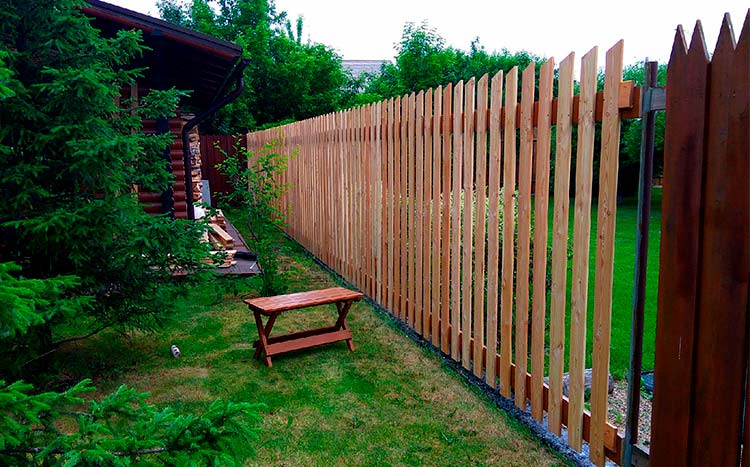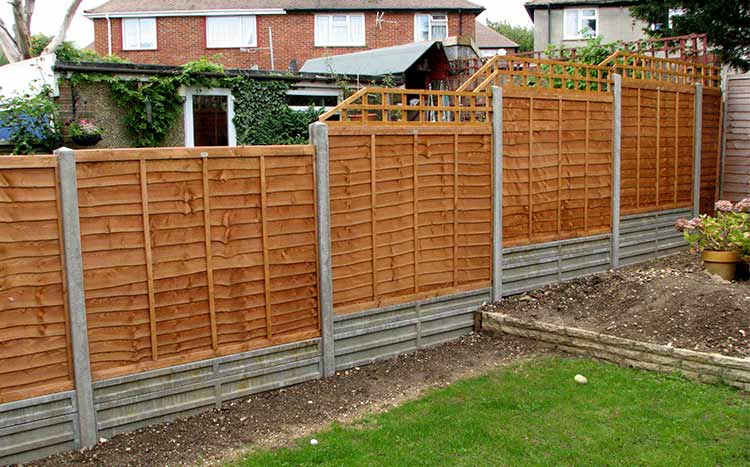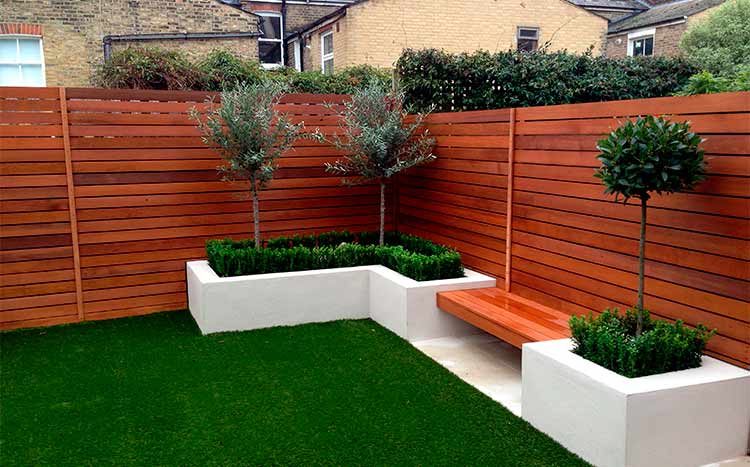In Utah, the majority of landowners don’t usually concern themselves with the rules regarding fence boundaries on their property. Yet, when disagreements emerge about ownership or usage rights of these dividing fences, the existing regulations prove to be essential. Therefore, what exactly do these Utah laws on fences specify, and what impact could they have on you?
Property line fence laws in Utah recognize joint and individual ownership of fences. According to Chapter 26 of Utah codes on enclosures and fences (Utah Code § 4-26-102), landowners can agree to erect a fence and share the construction costs based on the amount of land enclosed. Landowners who wish to use an existing property line fence shall pay the owner of the fence half of the value of the fence.
Utah’s statewide fence codes cover other important aspects of fence ownership and landowners’ responsibilities. Understanding these laws can help you avoid lawsuits related to property boundaries and solve disputes quickly when they arise. Also, note that local municipal and county-level building codes of ordinance apply depending on your location.

What we cover
ToggleDo I Need A Permit to Build A Fence in Utah?
You do not need a state permit in Utah to build a fence on your property. Permits to build or replace fences may be required by local governments. Municipal, county, and other lower-level government units have specific codes on construction projects including fences.
Some of the major cities and counties where some sort of permit is required to erect a fence in the beehive state include:
- Salt Lake City– Permit applications can be made electronically or physically at the Salt Lake City Building Permits Office.
- St. George, Utah- A permit is required according to St. George’s current municipal zoning regulations before building a fence or retaining wall in a front setback.
- Ogden City– A land use permit is required to erect a fence in Ogden City according to the city’s current building codes. Fence and parking slab permits are provided at no cost by the city.
- Moab City- Permits are required in some areas and by specific counties within Moab. For instance, Grand County requires a permit for a fence above 7 Feet in height.
- Park City- You need a building permit to construct any fence or retaining wall that is taller than 6 feet in height according to Park City’s municipal code. Those living in historical zoning districts require a permit to construct a wall or fence above 4 Feet in height.
- City of Provo-Building permit for fences that are 6 feet or taller in Provo.
Can I Replace an Existing Fence Without A Permit?
You cannot replace a fence without a permit where local laws require that landowners obtain permits to build a new fence in Utah. Permits requirements also extend to significant repairs, alterations, demolitions, or relocations. This way, the new fence’s design or specifications (height, materials, etc.) can be assessed and approved by the relevant authorities.
That said, you may be exempted from submitting fresh documentation and paying permit fees in some places if the replacement fence is identical to the previous one. Visit or call your local building permit office or ask a licensed contractor near you for further guidance on these exemptions.
How Tall Can A Privacy Fence Be in Utah?
Standard privacy fences in the state of Utah are between 4 to 6 Feet on average based on local building codes or zoning laws. However, it is important to refer to local fence codes or zoning laws for fence height restrictions in your location.
Below is a table showing current residential fence height restrictions from select major cities and counties in the State of Utah. Refer to your local building ordinance if your location is not listed here or seek advice from a licensed fence contractor in your location.
NB: Scroll to the top of the page and enter your zip code to find top-rated fence builders in your location. It is free to use the tool and there is no obligation to hire any of the recommended companies.
| City/County in Utah | Maximum Fence Height (Residential areas) |
|---|---|
| Salt Lake City | 4 Feet in front yards and 6 Feet in rear and side yards for all zoning districts except in a few special instances. |
| St George | 4 Feet in front yard setbacks and street-side setbacks. 6 Feet in the side or rear yards. |
| Ogden city | 4 Feet in front yards and 7 Feet in side and rear yards. 4 Feet on sides facing the street on corner lots- 6 Feet if corner side setback is provided behind the house. |
| Park City | 4 Feet in front yards 6 Feet in Rear and side yards – measured from the final grade |
| Grand County- Moab | 4 Feet in front yards |
| City of Provo | 3 Feet in front yards and 6 Fee in rear and side yards (solid fences) |
Note: Fence heights are usually measured vertically from the finished/final grade to the shortest/lowest side. The final height also includes additional components that are not part of the main fence such as lattice or electric wire.
Also, note that local fencing laws may have additional restrictions on the type of materials used on a fence, its opacity, and proximity to right-of-way public utilities such as streets.
Who Owns the Fence on Property Lines In UT?
Property line fences are owned by the landowner who erected them. If a landowner in Utah wishes to use an existing fence, they will pay the owner of such a fence half of the value of the portion of fence they wish to utilize.
However, Qualified landowners in the state of Utah with adjoining plots can agree to build a property line fence and have joint ownership. The amount to be contributed towards the building of a boundary fence shall be based on the amount of land to be enclosed.
Landowners sharing a property line fence are obliged by the same fence codes to maintain their side of the fence. Failure to do so makes them liable for any damages that occur on the other landowner’s side based on this negligence.
How Do You Know Where the Property Boundary Is?
Look for physical boundary line markers on the edge of your lot to see where the property line is. If they do not exist, you can also check the location of your property line from the drawings contained in your land deed or title.
That said, the easiest way to establish property lines in Utah, especially if there is a dispute or suit, is by doing a survey. Licensed surveyors in Utah can help measure and map your land based on existing data and mark the property line. The documentation produced after a survey can be relied upon in a court of law across the state.
Can My Neighbor Build A Fence On The Property Line?
Your neighbor is allowed to build a boundary fence as long as it meets local building codes. This applies to both urban and rural landowners across the state of Utah. If the neighbor pays for the entire fence, then the fence belongs to them unless you request joint ownership at a later date.

Can I Put Up A Fence on My Side of The Property Line?
Yes, you are allowed to erect a property line fence in Utah and claim full ownership of the fence. Adjoining landowners who want to utilize the fence or a portion of it will pay you half of the cost of the entire fence or the portion they will be using.
The only exception to this freedom is where the property line is dividing your lot from a public right-of-way utility like a road. For this, strict setback rules based on local building and zoning laws apply.
What Is A Spite Fence?
A spite fence is a fence that is an annoyance or undesirable in a way to an adjoining landowner or neighbor. People who erect fences usually do so because they want to inconvenience, annoy, or do not have good relations with their neighbors.
There are strict guidelines across the state of Utah that largely prohibit spite fences. For instance, it is not allowed to erect barbed wire fences or tall solid fences in most places in the Beehive State. Building a spite fence is, therefore, a risky undertaking and discouraged in most places.
Do I Need to Provide Drawings for A Fence Permit?
You need to provide detailed drawings or fence designs to the relevant authorities for assessment and approval to obtain a building permit. This is to ensure the proposed fence meets local building codes in terms of specification, materials, and positioning.
Utah Boundary Fence Laws at A Glance
| Statues | Boundary by Acquiescence | Local Fence Regulations |
|---|---|---|
| Utah Code § 4-26-102 - Partition fence Utah Code § 6-4031 - Contribution for qualified fence | In Utah, Boundary by acquiescence is shown by proving all of the following: Occupation of land up to a visible line marked by a monument, fence, or building. Mutual acquiescence or acceptance in that line as the property line for more than 20 years by adjoining landowners. | Salt Lake City - FAQ’s City of Provo - Decks, fences, and walls Brigham City - Fence regulations |
FAQ's
Who Owns The Fence Between Neighbors?
In normal circumstances, neighbors have equal ownership rights to a boundary fence that they jointly built according to Utah fence laws. However, a single landowner can claim ownership of a fence if they built it without input from adjoining landowners.
What if a new fence is blocking my view?
Such a fence could be in contravention of local fence height restrictions. Notify the relevant authorities if the fence is too tall or positioned in a way that it blocks your view. If an inspection proves that it does not meet local requirements, the owner will be compelled to demolish it.
How do I obtain approvals for fence permits?
Read your local building guidelines to understand what is required before you submit a fence design with the relevant authorities for approval. You may be able to submit the permit application online if your local government has that facility. Licensed fence contractors in Utah can help with permit applications as well.
Are There Restrictions When Installing A Fence?
You should follow local building and safety codes or guidelines when installing your fence even after obtaining approval. Ensure you install the fence correctly and use the right materials to avoid contravening the law.














